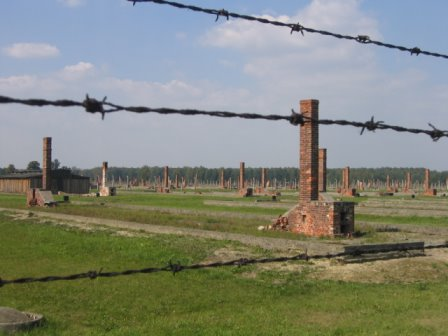
“How fortunate for leaders those men do not think.”
“The great masses of the people will more easily fall victims to a big lie than to a small one.”
– Adolph Hitler
A man who mastered the art of propaganda uttered these infamous words. He was right. If the masses of men did think for themselves, the Holocaust wouldn’t have happened. It only takes a brave few to stand up for their beliefs. The Nazi army – jaded, brainwashed and living in fear – never had the courage to speak out against the unthinkable tragedies that fell upon the Jews of Eastern Europe during the Nazi Holocaust of the Second World War.
Growing up in the United States, the son of a Jewish mother, I learned about and studied the Holocaust. I had read a lot of books and seen all the notable films touching on the subject. The tragedies in print and on film are graphic and unbelievable, but they cannot put you in the state of mind to properly quantify what actually happened. I knew that one day I would visit the sights of the Auschwitz I and Auschwitz II-Birkenau extermination camps. I wasn’t prepared, though, for how I would feel.
My cousin and I left Krakow to arrive early and avoid the crowds. We came to the bus station in Oswiecim and walked toward Auschwitz I. It was kind of surreal. It doesn’t really strike you until you are in the small museum at the Auschwitz I entrance that you are about to go to a place where thousands of people were brutally executed, just 60 years ago. It’s a very uneasy feeling and then you don’t really know what will happen when you actually get into the camp.
As we approached the main gate, we saw a phrase written on the top of the gate, Arbeit Macht Frei, Work Shall Set You Free. We know now that was a complete and utter lie. Very few people survived the camps no matter how hard they worked.
The camps do not look the way you think. They are well organized. The buildings are on a grid system and rowed up perfectly. They are constructed of dark bricks and seem almost peaceful until the bitter irony of where you are sets in. Right when you walk into the camp, on the right hand side, is the public execution site. There are gallows for public hangings and further down is the firing squad wall where the Nazis opened fire on groups of people for any number of outrageous reasons. The wall and the gallows make it easy to visualize what it must have been like to be a prisoner there.
The thoughts that came into my mind were incomprehensible. Maybe I could have done something to help the people if I were alive then. I wish I could have led them to freedom and alerted the world of the atrocities. I felt completely powerless and angry.
As we continued wandering around the camp, we came to the building we knew we would have to see, eventually – the cattle cars. When they arrived in Auschwitz, the Nazis immediately inspected them and their doctors to determine which of the Jews were healthy and strong enough to do manual labor. The few deemed fit to work were put right to work. The rest of the thousands were led directly to a large room where they thought they were going to shower. The Nazis made these people take their clothes off and enter the alleged shower room packed together like pigs. With no clothes to deal with it would be easier to retrieve valuables and useful things.
Once these thousands of people were in the room that had a capacity of 1500, the doors were locked. Poison gas was then let in from the fake showerheads. Within 15 minutes everyone in the room was dead. After the gas dispersed, the doors opened for the adjacent crematorium, where Nazis entered, picked up two or three dead Jews at a time and placed them on metal conveyors. After they were stacked up, they shoved them into the massive ovens until they were reduced to ashes. This went on until everyone had been cremated. The next round of people would be brought in and the horrific process was repeated.
Walking through these rooms was unbearable. I could picture was the people packed into the room, grasping and clawing for air and safety – their cries unheard until only a mass pile of dead naked bodies remained. My stomach felt terrible. How could this have happened? How could the Nazis seemingly have no remorse? These were innocent people – misled, captured and put to a horrible death for no reason other than their Jewishness. I felt hatred towards the Nazis, towards the German people who followed a maniac and never stood up for what they must have known was right. I felt a deep sadness for the hundreds of thousands of Jews and other “inferior” people who lost their lives prematurely at Auschwitz I.
After viewing the crematorium, we made our way back to the small museum at the front to catch the shuttle to Auschwitz II-Birkenau.
Auschwitz II-Birkenau lies three kilometers from Auschwitz I. It was built when massive numbers of Jews, Slavs, disabled people, homosexuals and others were being brought to Auschwitz for a more efficient means of killing them. This camp was the first and final stop for over a million innocent people.
The sheer numbers of people killed in the camp is daunting and the size of Auschwitz II-Birkenau is astounding. It is so big that when it was up and running, it contained over 300 barracks for the 425 acres of camp. Little is left of the camp now. The Nazis attempted to conceal the horrific genocide by destroying the camp before it was liberated in 1945.
What remains now are the brick barracks built for horses but used to house humans and the seemingly endless rows of eerie stand-alone chimneys. The Nazis burned the wooden barracks, but we can still see the horrifying smokestacks. These chimneys bear witness to the vastness of this death camp. When you first walk into the camp past the watchtower, a barbed wire wall and moat that go on forever greet you. Through the barbed wire there is the chilling reality of the chimneys, representing nothingness, where the ancestors of millions faced their final hours.
As you walk through the gates and follow the restored railroad tracks that once brought the condemned to meet their deaths, I felt horror, melancholy, and an uncontrollable anger for what actually occurred to the innocent people who had to endure the unrelenting wrath of the Nazis.
My first instinct was to again direct it at Hitler and the Nazis, but it goes beyond that – to the world community, the governments of Europe, America – for not getting involved in the war earlier and possibly saving masses of people. I was numb, mentally and physically, walking around this death camp where millions lost their lives, watching tourists snapping photos, smiling and cracking jokes on the hallowed ground.
It reminded me of the current situation near ground zero in New York City where I lost lots of people I knew and cared about. Currently, the World Trade Center site is a tourist attraction where people hock cheap photos of the towers and tourists ogle the hole and happily snap photos like they just achieved a goal. This made me sick. It brought the camps closer to home and soon enough I broke down.
It was inevitable and I am surprised that I lasted as long as I did. It was necessary and I felt better. I felt like I was crying with the people who died in the camp along with their families and ancestors. As I wept, I felt close to the dead. It was a strange feeling and when I finally stopped crying, sitting on a rock in the very back of the camp, there was an eerie silence.
Suddenly, it was as if I was hearing the cries of the dead – embracing the cries that went unheard so few decades ago. In that moment of enlightenment, I started to envision the everyday lives of the people in the camps and see their faces and feel their spirits. It was as if they were embracing me knowing I would never forget what happened and would pass my experience along to others.
These emotions are difficult to express. My breakdown in Auschwitz II-Birkenau was a moment of clarity. It made me feel closer to the Holocaust than I ever had before. It made it real. Being there brought me to another level of understanding – something books and films can’t quite accomplish. I hope all people make this pilgrimage – to never forget what happened to millions of innocent people.
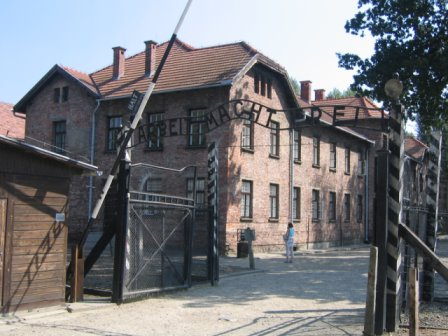
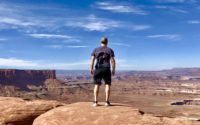

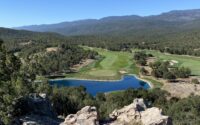
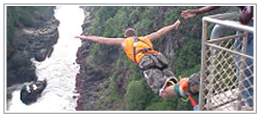








Thank you for this blog…I am visiting there later this year and this blog has confirmed my visit to these ruins. Your description and feeling behind it, rings so true and has left me with an ache in my heart even though I have not yet set foot behind the walls. I wish you all the best on the rest of your travels.
Regards
Belinda
I’m kinda disappointed that this is the only post you have about anything relating to Poland in your entire Europe series here.